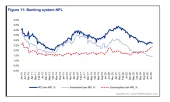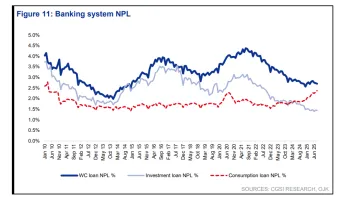Lack of trust is damaging Asian retail banks
By Leong Chee Tung and Emily LooAsian retail banks face a serious problem: People lack confidence in them. Too often, potential customers remain unbanked or meet their financial needs elsewhere.
For example, while about one in 10 Asians took a loan from a financial institution in 2011, more than one-quarter chose to borrow from friends or family.
Of the customers in Asia-Pacific who do have a banking relationship, 70% choose to walk into a branch despite the proliferation of other channels. Banking leaders who seek a market advantage in this region should capitalize on these opportunities to build trust and deepen customer relationships.
Achieving this goal, however, will require Asian banking executives to find the right incentives, promote the right behaviors, and hire the right talent.
The right incentives
Incentives can be a powerful way to drive and reward behavior. Short-sighted and self-serving incentives erode trust between customers and their banks, because customers suspect — and often, rightly so — that their banker’s advice is not in their best interests.
The solution is to take a different approach.
First, decide on a measure of trust and customer engagement that is robustly linked to the bank’s desired business outcomes, such as cross-sell ratios and profitability per customer.
Next, identify the customer service behaviors that drive these outcomes and define observable effectiveness criteria for them.
Finally, incentivize staff based on how well they demonstrate those behaviors. Examples include employees who go out of their way to meet customers’ needs and who greet customers within 10 seconds of entering a branch.
The right behaviors
Banks follow two mistaken strategies that encourage employees to behave in ways that are not customer centric.
First, overly prescriptive standard operating procedures and mystery shopping processes may fail to empower staff to do what is right for the customer. Second, many banks believe that creating detailed job descriptions for each role is enough to help employees understand how to perform their role and interact with customers.
Correcting these problems requires banks to intensify their training and communication. Staff members not only should understand their bank’s processes and procedures but also the key behaviors that encourage trust and customer engagement.
Communication from leaders about building customer trust must go beyond lip service and a relentless focus on financial results. Customer-centricity must be core to the bank’s mission, and clear communication will help employees understand and exhibit behaviors that build it.
The right talent
The best way for banks to ensure that their employees exhibit the right behaviors is to hire people with the right talent for their role.
However, academic qualifications and prior experience are often used as a proxy for ability and weighted favorably in the hiring process. Instead, banks need an objective way to select employees who are naturally inclined to meet customers’ needs while also helping the bank achieve its financial goals.
Talent-based selection and career planning is still rare in Asian banks, yet there is strong evidence that talent-based selection works. A Gallup client using this disciplined strategy, for example, has seen a 64% profit lift over four years — and a 184% increase over an eight-year period — in one of its businesses.
The bottom line
Executives at Asian retail banks need to confront the uncomfortable reality that for customers, “feelings are facts.” Gallup analysis shows that customers who were classified as fully engaged represented a 23% premium in share of wallet, profitability, revenue, and relationship growth, while actively disengaged customers represented a 13% discount on the same measures.
Creating a fully engaged customer requires inspiring high degrees of Confidence, Integrity, Pride and Passion. Failure to do this gives banking customers little reason to consolidate their increasingly fragmented banking relationships. To reverse this trend, banks must rethink their understanding of human behavior and refocus their organizations on building trust and customer engagement.




















 Advertise
Advertise






